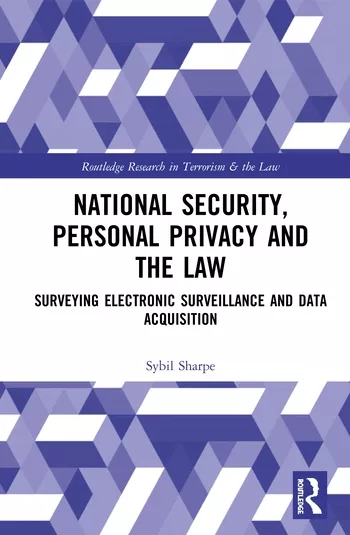Securing Healthcare: Safeguarding Patient Care and Privacy Through Agile Cyber Strategies

ThisisEngineering via Unsplash
With a wealth of sensitive patient data and aging complex technology ecosystems, healthcare organizations are a gold mine for cyber attackers. Healthcare breaches are consistently more expensive than breaches in any other industry, costing on average $9.8 million per incident in 2024 — $3.7 million more than the next most costly industry. Ransomware attacks, in particular, have surged worldwide in recent years, and healthcare is no exception, as many provider organizations are willing to pay ransoms to resume operations and minimize disruptions to patient care. In the United States, ransomware attacks on the healthcare sector rose 128 percent in 2023. While breaches in any organization can have severe effects and steep costs, attacks on healthcare organizations can have fatal consequences — disrupting preventative care at best and delaying life-saving interventions at worst. Understanding these growing threats, the unique security pain points across the industry, and how to implement effective cybersecurity strategies is critical for navigating this moment.
Healthcare’s Third-Party Access Problem
Of particular concern for healthcare is the growing concern of third-party risk, from supply chain attacks to misuse of network access. Whether outsourcing the management of supply inventories, patient billing, IT operations, or other essential day-to-day functions, healthcare organizations often rely on a vast network of third-party vendors. While such operational outsourcing allows hospitals and clinics to focus on patient care, it also significantly increases an organization’s attack surface. In fact, Imprivata’s State of Third-Party Access in Cybersecurity report found that nearly half (48 percent) of IT security practitioners surveyed worldwide agree that third-party remote access is becoming the most common attack vectors.
In February 2024, a ransomware attack on Change Healthcare brought third-party vulnerabilities within healthcare into sharp focus. As a subsidiary of UnitedHealth Group, Change Healthcare provides over 100 critical functions that are vital to the healthcare system — such as patient coverage authorization, claims processing, and prescription drug processing. The attack led to a shutdown of these services, delaying access to care and disrupting the flow of billions of dollars to providers. This incident highlighted the unique third-party risks facing the healthcare sector. Change Healthcare paid a $22 million ransom to prevent the publication of stolen data affecting an estimated 100 million individuals, but the payment ultimately did not secure all the data. The breach has cost the organization billions of dollars in repayments and lost business, and it took nine months to fully restore its clearinghouse services.
When legacy systems leave the security of patient data vulnerable to the cyber hygiene practices of employees and outside vendors, such breaches can be devastating. Ransomware attacks like the one on Change Healthcare, along with other attack vectors such as phishing emails and social engineering, are all too common across the sector — exploiting the high-stakes nature of healthcare. On top of the vulnerability of such sensitive data, reliance on complex third-party ecosystems introduces enormous risks. Third parties often have a hand in every level of healthcare operations, from software solutions to data storage and billing systems. Organizations leaning on legacy cybersecurity strategies and solutions lack visibility into the security practices of their outside vendors, leading to disparate security standards for the same sensitive data. Even when an organization complies with privacy regulations like HIPAA in the U.S., many of these regulations fail to adequately address third-party access. When breaches occur, as seen in the case of Change Healthcare, the impact extends not only to the corporate clients of third parties but also to patients, jeopardizing both their health and privacy.
Less Is More When It Comes To Data Access
This is just one example, and healthcare’s risk surface is far broader than just third-party access. With so many people touching patient data, adequate security cannot maintain a one-size-fits-all approach to data access. Robust access management for both privileged internal users and third parties can significantly reduce unnecessary vulnerabilities. The aforementioned Imprivata survey found that 34 percent of organizations that experienced a data breach or cyberattack due to third-party access in the past 12 months reported the attack was caused by the third party having too much privileged access. Applying a zero-trust model for every request, regardless of whether it originates internally or from an outside vendor, will help safeguard critical information. Zero-trust architecture minimizes attack surfaces, reducing the chances of an attacker moving laterally across a system. Even if attackers breach the perimeter, by continuously monitoring access, zero-trust models enable organizations to quickly isolate compromised areas to ensure critical systems like electronic health records remain operational while organizations resolve the breach.
According to the Imprivata survey, 58 percent of IT security practitioners believe their security strategy to address privileged access risks is inconsistent or non-existent, pointing to a clear opportunity for improvement. A zero-trust model tackles this issue head-on. This model centers on the least-privilege access principle, limiting access granted to users and devices to the minimum level needed to execute respective job functions. Leveraging role-based access control (RBAC) ensures personnel can only access the data required to conduct their tasks. So, while a doctor might be able to view complete patient records, administrative assistants may only have access to the patient information needed for billing or scheduling. Such limitations significantly reduce the attack surface threat actors can access — not to mention malicious and negligent insiders who may steal or mishandle data.
Bolstering access management and monitoring helps healthcare organizations defend against both external threats and internal malpractice that jeopardize patient well-being, such as drug diversion. By leveraging AI and machine learning, organizations can monitor every controlled substance transaction and detect anomalous behavior that signals potential misuse. In tandem with intentional mishandling, negligence remains a significant risk — even with robust access management implemented. Healthcare professionals often serve as the final defense in safeguarding patient data when these threats arise. Comprehensive staff training is key to reducing one of the most common causes of breaches: human error. Educating staff on identifying common threats, like identifying phishing emails, and cybersecurity best practices should be the backbone of any organization’s cyber strategy.
Prioritizing Security Without Introducing Fatal Inefficiencies
While data breaches have dire consequences — disrupting operations and exposing sensitive information — inefficient cybersecurity practices can introduce delays that severely impact patient care over time. Finding the balance between effective security solutions that avoid introducing too many hurdles for healthcare workers is necessary to see a worthwhile return on investment and care outcomes.
Mature cybersecurity strategies harness artificial intelligence to strengthen threat detection and response. Protecting patient data effectively requires securing expansive endpoint environments. AI-driven tools, combined with automated security protocols, empower organizations to identify emerging threats in real time and respond quickly – before a breach can occur. Developing a patient privacy monitoring program is critical as organizations work to curb eroding patient trust, and AI tooling is essential for managing such initiatives. Such tools can detect the full range of suspicious behavior — from snooping to inappropriate record modification and data theft.
As for securing endpoint environments, mobile devices are behind much of the recent expansion in endpoint inventories — optimizing clinical workflows to provide better, more efficient care. While mobile devices streamline essential clinical to-dos like charting and real-time communications, ensuring secure access to applications and critical information across these devices poses a unique challenge given their often-shared use. Ensuring that access management across an organization is both comprehensive and efficient helps maintain security without introducing unnecessary risk. Adaptive multifactor authentication uses risk-based factors to adjust authentication requirements. Perhaps a user logging on from a familiar device and location only needs to input a password, whereas an unfamiliar location or device requires a fingerprint or one-time passcode. Such flexibility dramatically simplifies secure access. Meanwhile, single sign-on solutions can centralize authentication for workers accessing third-party applications, bolstering security while enabling frictionless access. By simplifying secure access, organizations can safeguard sensitive data while driving efficiency and improving their infrastructure for productivity — ultimately reducing clinician burnout.
With complex technology ecosystems and a fast-paced, high-stakes environment, the healthcare sector faces more cybersecurity threats than ever before. In today’s digital world, cybersecurity is foundational to providing adequate patient care — whether critical, preventative, or otherwise. Strengthening an organization’s cybersecurity strategy doesn’t have to mean convoluted workflows that create barriers for clinical users. Agile cybersecurity strategies should integrate seamlessly into the systems they protect — managing access both within and outside the organization, leveraging AI for real-time threat detection and remediation, and streamlining authentication. While patient privacy is so important, patient health and safety are the real impetus for improving the state of cybersecurity across healthcare. Implementing effective systems that account for the demand and urgency of the services they secure is critical.
Looking for a reprint of this article?
From high-res PDFs to custom plaques, order your copy today!









